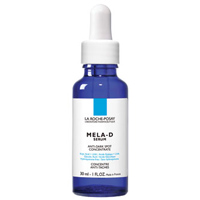| Kojic acid is an ingredient used in skin lightening products for its ability to inhibit the activity of tyrosinase, an enzyme necessary for the synthesis of melanin, the skin’s pigment. This makes it useful in the treatment of Melasma, chloasma and other hyperpigmentation disorders.
Kojic acid is obtained from fungus or as a by product in the fermentation process used to make sake, the Japanese rice wine. It is consumed widely in Japan for its perceived health benefits. In fact, it possesses antibacterial, antifungal and antioxidant properties, and is used to prevent fruits from turning brown, to preserve the pink and red color of seafood and in cosmetics to lighten skin.
|
Kojic Acid as A Skin Lightening Agent
Millions of individuals worldwide suffer from skin discoloration so it’s useful to have yet another possibility in helping to rectify the situation. In skin lightening preparations, kojic acid is included in concentrations ranging from 1-4%. Studies have shown it to be as effective in lightening skin as hydroquinone when both were combined with glycolic acid. And, in a comparison study, 2% hydroquinone, 10% glycolic acid, and 2% kojic acid decreased hyperpigmentation in patients with Melasma better than the same combination without kojic acid.
Kojic acid’s major drawback is that it can cause skin sensitivity and contact dermatitis in some individuals. This may manifest as redness, rashes or even blisters.
The Importance Of Proper Formulation
Kojic acid is unstable when exposed to air or sunlight, so it must be formulated carefully and packaged to minimize its exposure light and air. Tubes and airless pumps are your best bets. Some manufacturers use kojic dipalmitate, which is a variation of kojic acid that is more stable. However, it’s believed to be less effective than kojic acid in limiting the production of melanin.
Formulations with kojic acid may incorporate other ingredients such as vitamin C or sunscreen. As an antioxidant, the vitamin C helps to stimulate the production of collagen fibers and can fight free radical damage associated with skin damage. Vitamin C has also been shown to aid in the skin brightening process delivering a uniformity in skin tone and texture. Since exposure to UV rays is one of the biggest triggers to melanin production, the inclusion of sunscreens help to protect the skin from UVA and UVB rays that promote melanin production. As with any skin lightening regimen, it is important to protect skin from the sun. In this case, if your kojic acid preparation does not contain a high SPF broad spectrum UVA/UVB blocker, you should consider using one such as Anthelios every day.
If you think that you might benefit from treatment with kojic acid, there are two formulations that you may want to consider:
- La Roche Posay Mela D Bright includes kojic acid and vitamin C to deliver superior skin brightening effect.
- La Roche Posay Mela D Serum contains kojic acid plus LHA (an exfoliating agent that assists the skin lightening process) and glycolic acid to help limit melanin production.
- La Roche Posay Mela D Hands includes kojic acid, LHA plus a sun filter to deliver evenly toned hands and protect them from further damage.
The La Roche Posay Mela D range has been clinically shown to improve skin uniformity and decrease the appearance of dark spots when used regularly.


